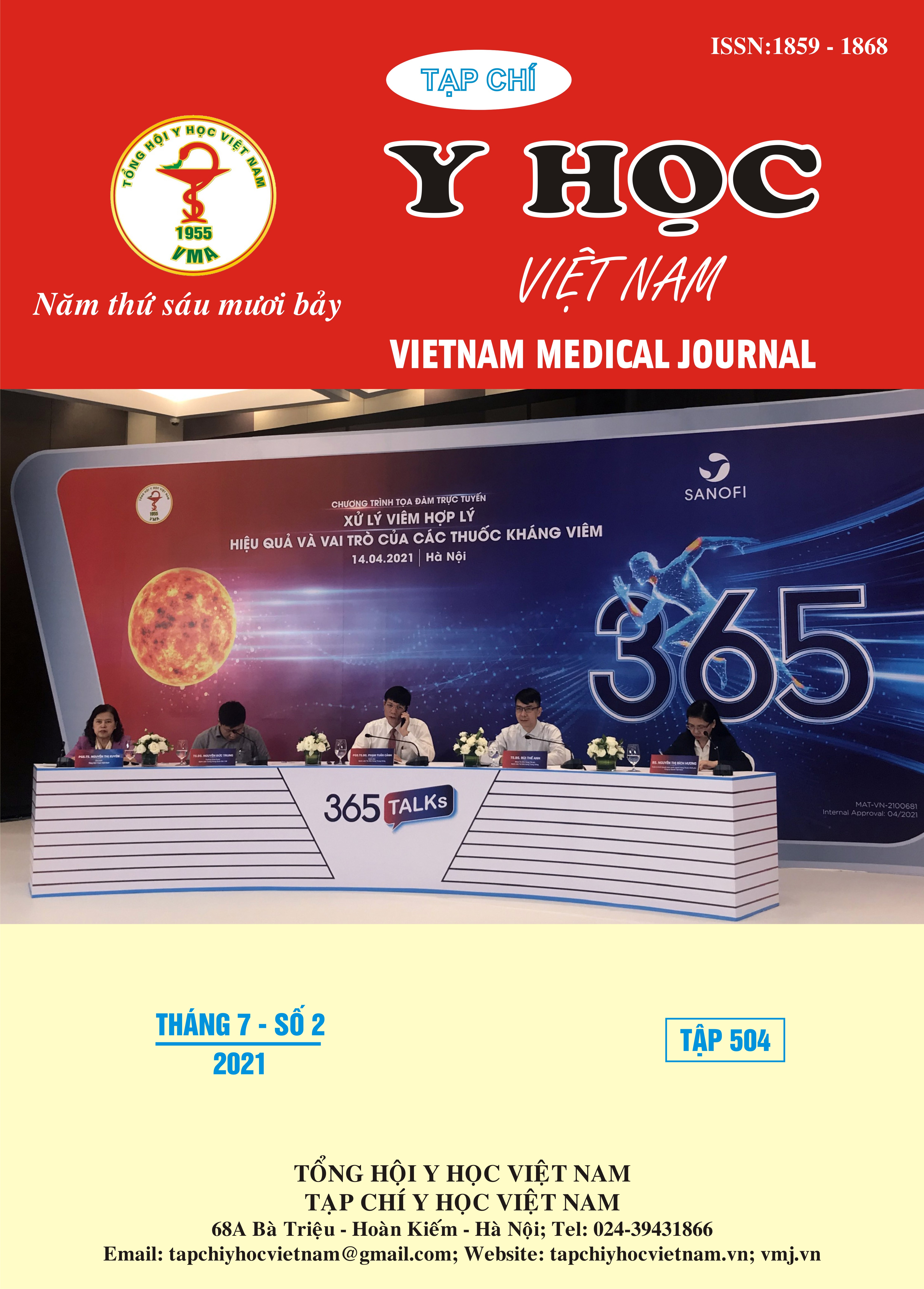EVALUATION OF VOICE DISORDERS IN PATIENTS AFTER PARTIAL LARYNGECTOMY
Main Article Content
Abstract
Partial laryngectomy accounts for 31.2% of all laryngeal cancer surgeries. The removal of part of the larynx will change the voice. We conducted the study "Evaluation of voice disorders in patients after partial laryngectomy" in a group of 30 patients submitted to partial laryngectomy at the National Hospital of Otorhinolaryngology. Their voices were analyzed before and after partial laryngectomy by the PRAAT acousticvoice analysis system. Results: Age: 45-65 years old: 63.33%, mean 60.16, male 100%. Reason for admission: hoarseness: 100%. Voice assessment before partial laryngectomy: Vowel pronunciation: neutral tone (Shimmer index 5.673, Jitter 2.005%, HNR 26.783), fundamental frequency: 128 ± 2.8; basicamplitude: 36 ± 2.1, basic field: 89± 3.7. Tone: Unsigned: F0, F0-30, F0-50, F0-60, grave accent: F0, F0-30, F0-50, F0-80, acute accent: F0- 60, F0-80, F0 + 70, question accent: F0 -F0-85, F0-90, F0-F0+30, fall accent: F0, F0-60, F0+40, F0+90, heavy accent: F0, F0-90, F0-120, F0-140. Voice assessment after partial laryngectomy: neutral tone (Shimmer index 5.874, Jitter 2.452, HNR 28.459; fundamental frequency: 98 ± 3.7; fundamental amplitude: 47 ± 4.3, fundamental field: 119 ± 5.6. Tone: Unsigned: F0, F0-50, F0-70, F0-80, grave accent: F0, F0-55, F0-76, F0-90,acute accent: F0-70, F0 -90, F0+60, question accent: F0, F0-95, F0-105, F0-120, F0-90, F0-80, F0+30, fall accent: F0, F0-70, F0+30, F0 +50, heavy accent: F0, F0 - 110, F0-130, F0-150.
Article Details
Keywords
Partial laryngectomy, PRATT program, Shimmer index, Jitter, HNR, tone, fundamental frequency, fundamental amplitude, sound field
References
2. Forastiere AA, Ismaila N, Lewin JS, et al. Use of Larynx-Preservation Strategies in the Treatment of Laryngeal Cancer: American Society of Clinical Oncology Clinical Practice Guideline Update. J Clin Oncol. 2018;36(11):1143-1169. doi:10.1200/JCO.2017.75.7385
3. Steuer CE, El‐Deiry M, Parks JR, Higgins KA, Saba NF. An update on larynx cancer. CA: A Cancer Journal for Clinicians. 2017;67(1):31-50. doi:10.3322/caac.21386
4. Jenckel F, Knecht R. State of the Art in the Treatment of Laryngeal Cancer. Anticancer Res. 2013;33(11):4701-4710.
5. Đoàn Thị Hồng Nhật, Lê Minh Kỳ. Kết quả phẫu thuật cắt thanh quản bán phần trên nhẫn tạo hình kiểu Tucker. Published online 2018.
6. Di Nicola V, Fiorella M, Spinelli D, Fiorella R. Acoustic analysis of voice in patients treated by reconstructive subtotal laryngectomy. Evaluation and critical review. Acta Otorhinolaryngol Ital. 2006;26(2):59-68.
7. Quản Thành Nam, Lê Minh Kỳ. Đánh giá kết quả phẫu thuật cắt thanh quản bán phần kiểu Tucker trong điều trị ung thư thanh quản giai đoạn T1b, T2 tại bệnh viện Tai Mũi Họng Trung Ương. Published online 2013.
8. Gökhan Demir M, Paksoy M, Şanlı A, et al. Subjective and objective evaluation of voice and pulmonary function in partial laryngectomised patients. Integr Cancer Sci Therap. 2016;3(1). doi:10.15761/ICST.1000168
9. Phạm Văn Hữu. Nghiên cứu hình thái lâm sàng, nội soi đối chiếu với kết quả phẫu thuật của ung thư thanh quản giai đoạn sớm. Published online 2008.


